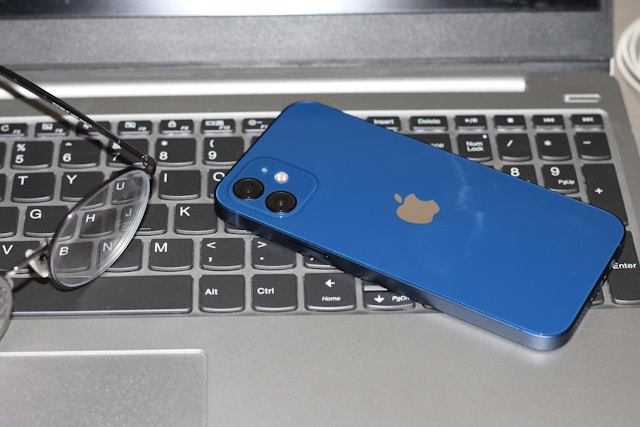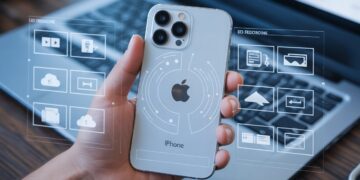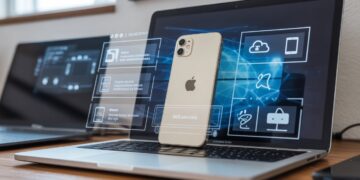In today’s hyperconnected world, your iPhone isn’t just a communication device, it’s your digital vault. From personal photos to financial details and health data, everything is stored in one place. That’s why encrypting your iPhone is one of the smartest privacy moves you can make in 2025.
This guide explains how to encrypt your iPhone, how iOS encryption works, and how to verify your data is protected with expert insights, comparisons, and practical steps most users miss.
What Is iPhone Encryption and Why It Matters
Encryption converts your personal data into unreadable code that only your passcode can unlock. Without encryption, anyone who gets hold of your device or backups could potentially access your files, even without your consent.
Apple’s hardware-based encryption is one of the strongest in the consumer tech industry. It’s activated by default when you set a passcode meaning all your photos, messages, and app data are encrypted using a unique key tied to your device’s Secure Enclave chip.
Why It’s Important in 2025
Cybercrime has evolved. According to a 2024 Statista report, mobile data breaches increased by over 26% year-over-year, and phishing attacks targeting iPhone users have become more sophisticated. Encryption ensures that even if your phone is lost, stolen, or hacked, your personal information remains unreadable to outsiders.
Step-by-Step: How to Encrypt Your iPhone
The good news? iPhones come encrypted by default but there are still essential steps to ensure full protection.
Step 1: Set a Strong Passcode
-
Go to Settings → Face ID & Passcode (or Touch ID & Passcode).
-
Choose Turn Passcode On if it’s not already enabled.
-
Create a 6-digit or alphanumeric passcode.
Why it matters: Your passcode acts as the encryption key. Without it, no one (not even Apple) can decrypt your data.
Step 2: Enable Face ID or Touch ID
This adds biometric protection and makes your device harder to unlock through brute-force methods.
-
Go to Settings → Face ID & Passcode → Set Up Face ID (or Touch ID).
Expert tip: Biometrics make encryption more practical they protect your data without making daily use inconvenient.
Step 3: Check Encryption Status
To confirm your iPhone is encrypted:
-
Go to Settings → Face ID & Passcode and scroll down.
-
You’ll see “Data protection is enabled.”
That line confirms your phone’s full storage encryption is active.
Step 4: Encrypt iCloud Backups
Local encryption is powerful but your data in the cloud must be equally protected.
How to enable encrypted iCloud backups:
-
Open Settings → [Your Name] → iCloud → iCloud Backup.
-
Ensure Backup This iPhone is toggled on.
-
Your backups are automatically encrypted end-to-end if you use Advanced Data Protection.
Turn On Advanced Data Protection (New in iOS 17+)
-
Go to Settings → Apple ID → iCloud → Advanced Data Protection.
-
Turn it on to extend encryption to Notes, Photos, Voice Memos, and more.
Why this matters (2025 Insight):
Advanced Data Protection uses end-to-end encryption across 23+ data categories something only you can decrypt, not Apple or law enforcement.
Step 5: Encrypt Local Backups in Finder (Mac) or iTunes (Windows)
If you back up your iPhone manually:
-
Connect your iPhone to your computer.
-
In Finder (Mac) or iTunes (Windows), select your device.
-
Check “Encrypt local backup.”
-
Set a strong password and save it securely.
Pro Tip: This step ensures health, passwords, and Wi-Fi data are also encrypted during backup something not included in unencrypted backups.
How iPhone Encryption Works (Simplified)
iPhone encryption uses a two-layer system:
-
File-level encryption – Each file is encrypted with a unique key.
-
Hardware key (Secure Enclave) – Stores encryption keys securely, isolated from the main processor.
When you unlock your device, the Secure Enclave decrypts data on the fly. When locked, all data becomes unreadable even if someone physically extracts the storage chip.
Comparison: iPhone vs Android (2025)
Feature |
iPhone Encryption |
Android Encryption |
|---|---|---|
Default Encryption |
Always On |
Varies by OEM |
Hardware Isolation |
Secure Enclave |
Trusted Execution Environment (TEE) |
Cloud Backup Encryption |
End-to-End (Advanced Data Protection) |
Partial (Depends on Google Account settings) |
Key Management |
User + Hardware Based |
User-Based (Varies by model) |
Expert opinion: While both platforms have improved encryption, Apple’s integration between hardware, software, and services remains more consistent and automatic.
People Also Ask: Common Encryption Questions
1. Is my iPhone automatically encrypted?
Yes as soon as you set a passcode. However, cloud backups require manual activation of end-to-end encryption through Advanced Data Protection.
2. Can Apple unlock an encrypted iPhone?
No. Apple’s encryption model prevents them from accessing user data without the passcode. This is why Apple often refuses law enforcement data requests that would require bypassing encryption.
3. What happens if I forget my passcode?
You’ll need to factory reset your iPhone, losing all data that isn’t backed up. Encryption ensures no one can access it without the original credentials.
4. Does encryption slow down performance?
No Apple’s chips are optimized for encryption, and it operates seamlessly in the background without affecting speed or battery life.
Visual Ideas for Your Blog Post
To enhance user engagement and SEO dwell time, consider adding:
-
Infographic: “How iPhone Encryption Works From Passcode to Secure Enclave.”
-
Table: Comparison of encryption levels (Local vs iCloud).
-
Flowchart: “What Happens When You Turn On Advanced Data Protection.”
-
Chart: Growth of encrypted iCloud categories from iOS 16 to iOS 18.
Expert Takeaway
In 2025, digital privacy isn’t optional it’s essential. Apple’s encryption system provides one of the most secure consumer-level protections available today.
Still, many users fail to take full advantage of it because they never activate Advanced Data Protection or encrypted local backups. By enabling both, you’re closing the last major gap in your iPhone’s privacy armor.
Encryption doesn’t just protect your data it protects your digital identity. Whether you’re a student, professional, or business owner, securing your iPhone means safeguarding your life’s information.
Final Summary
Step |
Action |
Why It Matters |
|---|---|---|
1 |
Set a strong passcode |
Activates device encryption |
2 |
Enable Face/Touch ID |
Prevents unauthorized access |
3 |
Turn on Advanced Data Protection |
Encrypts cloud data end-to-end |
4 |
Encrypt local backups |
Secures health, password, and Wi-Fi data |
5 |
Verify encryption status |
Confirms total data protection |
By following these steps, your iPhone will be fully encrypted and future-ready offering peace of mind in an increasingly digital world.








